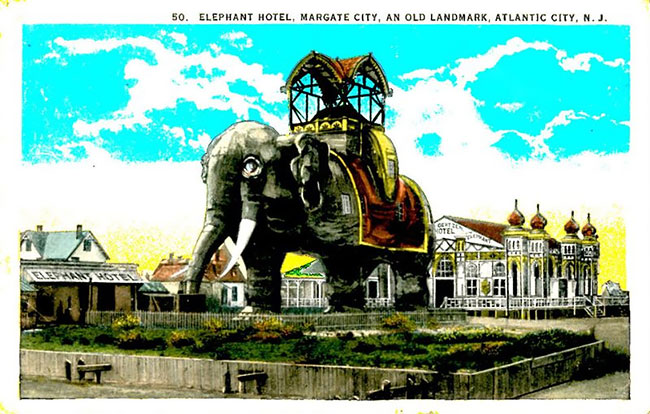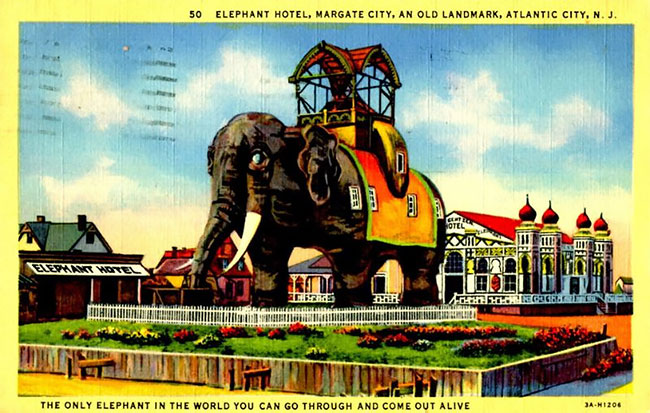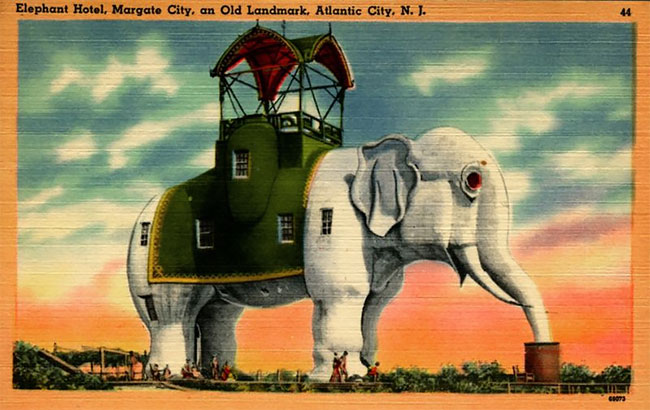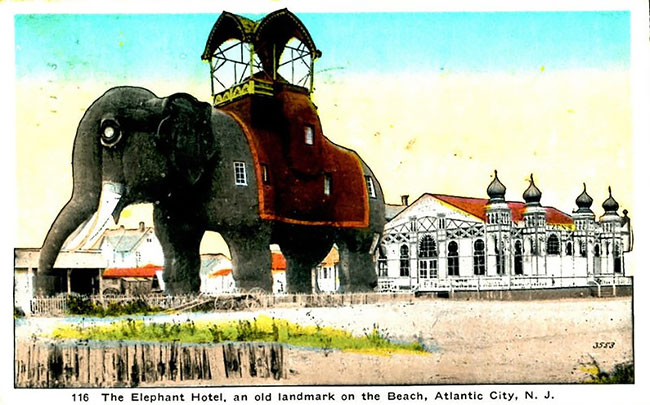Elephant Hotel: The Prime Example of Novelty Architecture in 1880s

Novelty architecture, also called programmatic or mimetic architecture, is a type of architecture in which buildings and other structures are given unusual shapes for purposes such as advertising or to copy other famous buildings without any intention of being authentic.
h/t: vintag.es

Their size and novelty means that they often serve as landmarks. They are distinct from architectural follies, in that novelty architecture is essentially usable buildings in eccentric form whereas follies are non-usable, ornamental buildings often in eccentric form.

Utility buildings and “novelty structures” are the red headed step-children of architecture – Like the Elephant Hotel, a 10 room hotel built in 1885. Intended to be one of a menagerie of buildings in the Margate City project in Atlantic City, New Jersey.





